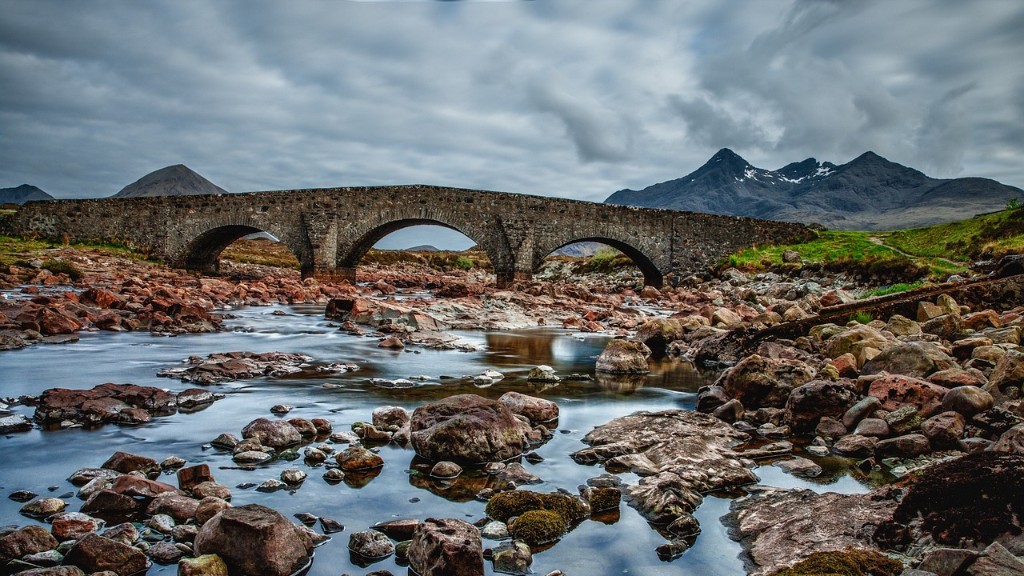Often called the “Father of Waters,” the Mighty Mississippi River is one of the longest rivers in the world at 2,340 miles long. It begins in Minnesota and winds its way through the center of the continental United States, eventually dumping into the Gulf of Mexico. But before it reaches the gulf, it has other rivers that flow into it along the way. Here’s a look at some of the rivers that flow into the Mississippi River.
Illinois River
The Illinois River is the most important tributary of the Mississippi River. This river starts in Chicago and flows for about 270 miles through Illinois and part of Missouri, feeding into the Mississippi just north of St. Louis. Historically, the confluence of these two rivers was an important location for Native Americans as it allowed easy passage between the Great Lakes, the Mississippi Valley, and the Rockies. The Illinois also serves as an important source of freshwater for the watershed near St. Louis.
Wisconsin River
The Wisconsin River is a tributary of the Mississippi River that flows about 260 miles through central Wisconsin. It begins in northern Wisconsin near the Michigan border and merges with the Mississippi near Prairie du Chien, Wisconsin. The Wisconsin River is known for its scenic beauty, with steep rock bluffs and rugged sandstone formations along its banks. Its many dams also make it a popular destination for recreational activities like boating and fishing.
Minnesota River
The Minnesota River is another tributary of the Mississippi, beginning in the Big Stone Lake in western Minnesota. From there it winds through central Minnesota, meeting up with the Mississippi near St. Paul. Along its 234-mile journey it passes through several major cities, including Shakopee, Minneapolis, and St. Paul. Navigation on the Minnesota River is limited due to its shallow depth, so it is largely used for recreational activities like canoeing and fishing.
St. Croix River
The St. Croix River is a tributary of the Mississippi River located in Minnesota and Wisconsin. It begins near Grant, Wisconsin and flows for about 170 miles through a variety of wetlands, lakes, and rivers before merging with the Mississippi near Hastings, Minnesota. The St. Croix is a protected river, with most of its banks surrounded by the St. Croix National Scenic Riverway. It is popular spot for canoeing, fishing, and wildlife viewing.
Missouri River
The Missouri River is the third major tributary of the Mississippi. It begins in Montana and then flows through North Dakota, South Dakota, Nebraska, Iowa, and Missouri before finally emptying into the Mississippi near St. Louis. It is the longest tributary of the Mississippi, spanning over 2,300 miles, and is the primary water source for millions of Americans. Historically, it was an important transportation route for Native Americans and the settlers of the West.
Ohio River
The Ohio River is the fourth tributary of the Mississippi, beginning in Pennsylvania and traveling southward until it empties into the Mississippi near Cairo, Illinois. The Ohio River is about 981 miles long and is the largest tributary of the Mississippi in terms of volume. It is also a major source of freshwater for the Midwest and serves as a key transportation and economic corridor for the region.
Arkansas River
Finally, the Arkansas River is a tributary of the Mississippi that begins in the Rocky Mountains in Colorado before flowing through Kansas, Oklahoma, and Arkansas. It eventually empties into the Mississippi near Arkansas City, Arkansas. The Arkansas River is one of the main arteries of the American Southwest, allowing for commercial and recreational travel as well as supplying freshwater to several states.
Economic Impact
These rivers play an important part in the economy of the United States. Together, they provide vital access to transportation and shipping corridors, serve as a source of freshwater for agriculture and industry, and attract recreational activities like fishing and boating. The rivers also provide habitat for a variety of wildlife and fish, making them an important part of the nation’s biodiversity.
Historical Significance
The rivers that flow into the Mississippi River have a long and storied history. They were major travel routes for the Native Americans before being transformed into trade routes by the European settlers. Over time, they have been a crucial part of the American economy, as they provided access to other parts of the continent as well as important sources of food and transportation.
Environmental Impact
The rivers that flow into the Mississippi River have a significant impact on the environment. For example, the Illinois River serves as an important source of freshwater for the watershed near St. Louis and is vital for the health of the local fish and wildlife population. Similarly, the Wisconsin River and its many dams form an important waterway for recreational activities as well as providing a home for numerous species of fish and wildlife.
Conservation Efforts
The rivers that flow into the Mississippi have long been considered a precious resource and have been the subject of many conservation efforts over the years. For example, the Illinois River is largely protected by the St. Louis Aquatic Reserve, while the Wisconsin River and the Minnesota River are both protected by the National Wild and Scenic Rivers System. These conservation efforts are designed to ensure that these rivers remain safe and healthy for generations to come.
Conclusion
The rivers that flow into the Mississippi River are truly a national treasure. From providing a vital freshwater source to being a crucial part of the American economy, these rivers serve many important roles. And thanks to conservation efforts and protective measures, these rivers will continue to flow for years to come.



